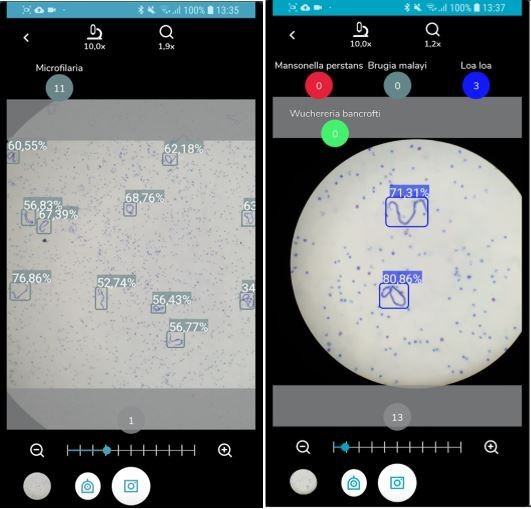They are creating an artificial intelligence algorithm for diagnosing tropical diseases | Leader in Social Information

Researchers from the Polytechnic University of Madrid (UPM), Spotlab, the National Center for Microbiology of the Carlos III Institute of Health (CNM-ISCIII) and the Red Biomedical Research Center have created an artificial intelligence (AI) algorithm for diagnosing neglected tropical diseases. diseases such as filariasis using a mobile phone connected to a microscope.
Filariasis is a common tropical infectious disease affecting more than one billion people worldwide. Depending on the parasite, it causes lymphedema, elephantiasis, itching, and blindness known as river blindness.
To eliminate filariasis as a public health problem, mass drug administration is carried out to all people living in endemic areas. The diagnosis of this disease is made by microscopic examination of a blood smear, which is labor-intensive and for which specialists are not always available.
As part of their research into the disease, researchers have developed artificial intelligence algorithms to detect microfilariae—infectious larvae that can transmit filariasis—in the blood.
These algorithms distinguish the most common parasite species in Africa (“Loa loa”, “Mansonella perstans” and “Wuchereria Bancrofti”) and Southeast Asia (“Brugia spp”) using a mobile phone camera connected to an optical microscope with an adapter printed on a 3D printer.
To create this system, the researchers used 115 clinical cases and tested the system in a CNM-ISCIII clinical setting. According to the authors, the system has an accuracy of about 95%.
The results of the study have just been published in the journal Plos Neglected Tropical Diseases, and the paper’s main authors are Lin Lin, an engineer specializing in artificial intelligence, and Elena Dakal, who works on the clinical team, both under supervision. leaders Miguel Angel Luengo (Spotlab), José Miguel Rubio (CNM-ISCIII, Ciberinfec) and Maria Jesús Ledesma (UPM, Ciberbbn).
APPLICATION
The researchers also created a mobile app called HuggingSpot, which is available on the Google App Store and allows the scientific community to upload AI models and test them.
As detailed by UPM, this innovation helps support the diagnosis and monitoring of filariasis, especially in resource-limited settings where access to specialized technicians and laboratory equipment is limited.
